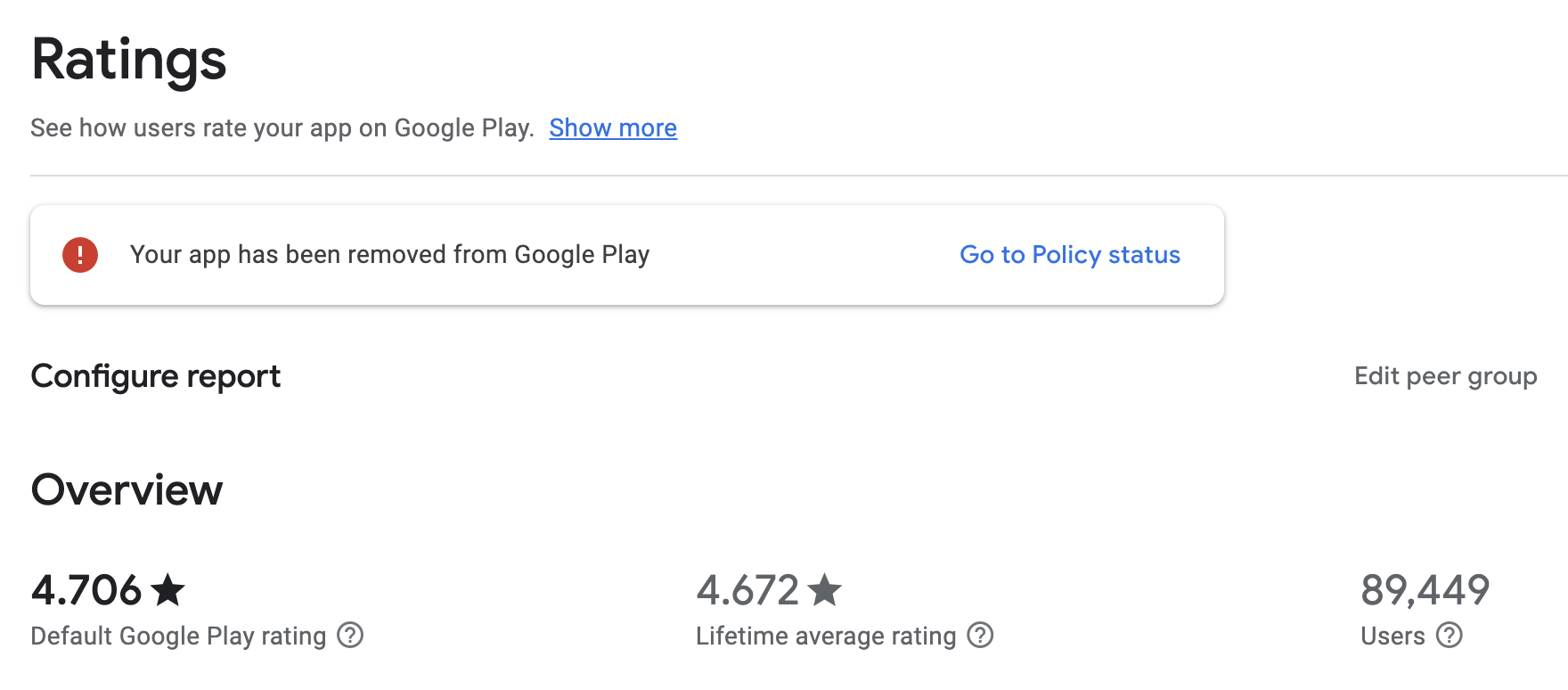The 7 success factors in building 5 millions downloaded app
Why I write it
Due to Google Play’s recent policy requiring the disclosure of real names and addresses, I had to close my Google Play account, resulting in the loss of all my apps. While this was unfortunate, looking back, it has had a significant positive impact on my life and career as an Android developer. My continued passion for the Android ecosystem has been driven by my love for creating community-focused apps as a hobby. I still remember waking up at 5 a.m. every morning and working weekends for those apps. I truly enjoyed it—developing new features users wanted and seeing people use them every day brought me great satisfaction.
An app with close to 5M downloads

I never anticipated that one of my apps would become so widely recognized within the community. As it is being shut down on Google Play this month (September 2024), it has nearly 5 million downloads and thousands of daily active users!!! What started as a solo hobby project has turned into something much bigger than I expected, and I’m both surprised and proud of this journey and success.
As the app comes to a close, I’ve reflected on what made it successful, and here are the key factors, in my view, that contributed to its growth.
The 7 success factors in building app
1. Being first in the market (Global vs Niche)

In 2011, Android was still relatively new, around the time of Android OS 2.3. There were some apps available on the “Android Market” (before it was rebranded to “Google Play”), including a few good calendar apps like Google Calendar.
Inspired by my tech mentor Charles Keck’s Chinese calendar on Windows OS, I decided to create a calendar specifically for the Myanmar community. Although Android devices weren’t yet affordable for everyone, demand for budget options was growing.
My initial thoughts were:
- Large companies wouldn’t target a single community.
- Competing globally would be tough for a solo project.
- I wanted a calendar for my own needs, and waiting years for Google or others to add regional calendars wasn’t ideal.
Choosing a niche market meant less competition, and my app was the first of its kind on the Android Market.
2. Spreading the words

Many great projects struggle to reach users, especially when you’re working solo. Friends and family can only spread the word so far, and formal marketing — ads in newspapers, social media, or search engines—can be costly. Like it or not, learning to promote your work is essential.
Make it community-driven.
Knowing my limits with time and money, I focused on reaching my target audience directly. I joined community forums and Facebook groups interested in mobile tech and app sharing, messaging active members. Many were surprisingly helpful—some even owned mobile shops where they installed apps for customers. They loved the idea of getting early access to my app, so I sent them a copy before each official release.
This approach worked well. They gained a unique offering for their customers, while I gained advocates who spread the word, educated my end users, and helped grow my app’s reach.
3. Time for feedback

The app is now in users’ hands, but how do they feel about it? I recall attending a Design Thinking workshop where we learned:
Listen not only to “words” but also to “clues.”
Feedback goes beyond words; observing user interactions reveals more. I shared the app with friends and family, asking them to explore it without guidance. Watching how naturally (or not) they navigated to specific features provided valuable insights.
Designing with the user’s perspective in mind is crucial. When an app feels intuitive, users are more likely to return and engage consistently.
4. Journalist is your friend - seek for “win win”

Publicity is a powerful way to reach a large audience. At the time, tech bloggers, magazines, and newspapers regularly featured industry trends, gadget reviews, and ads for big tech companies. I noticed some also reviewed mobile apps — whether paid or free — that their readers might find useful.
Have a press kit on hand.
It is time to do cold calls. I prepared a press kit, complete with many high-resolution images in various formats, and sent it to editors, keeping it as easy as possible for them to publish. It paid off; some outlets ran my content word-for-word, and even competitors published the same content at same time. Writing the piece myself allowed me to emphasize the app’s value and encourage people to download and try it out.
5. Negativity to Opportunity

I am proud of the app’s positive ratings from thousands of users, though it hasn’t always been smooth sailing.

While we all enjoy good reviews, negative feedback can sometimes offer valuable insights. For instance, accuracy is crucial in a calendar app. Once, a user claimed it was inaccurate and discouraged others from using it. Rather than ignore it, I reached out to understand the issue. Often, misunderstandings arise when users reference the wrong sources.
When we take the time to listen and explain, even critical users can become allies, helping clarify things for others in the community in the future. Since feedback is rare, don’t shy away from engaging with it—especially the negative kind.
Negative is a form of feedback and an opening for you to try.
6. User Experience vs Profitability

Seeing a growing user base can make monetization tempting, and financial incentive does help sustain long-term development. Many projects fade once initial passion wanes, so finding a way to profit is key to continued updates and new features.
Options include in-app purchases, converting users to a paid version, or adding ads. While ads are a popular choice, they can drive users away if too intrusive. Partnering with brands for sponsored ads, as I did with Samsung and OPPO, is another option but often requires contracts and is usually short-term.
Strike a balance.
My approach was to prioritize user experience by only using small, unobtrusive banner ads and ensuring the app works offline, hiding ads when users are disconnected. This way, revenue is generated without compromising content or usability.
7. Understanding user pain points

As the user base grew, feature requests started coming in through emails and internet forums. While it was natural for users to want the app tailored to their preferences, prioritizing these requests was sometimes challenging.
Early on, some users suggested reducing the app size to make it easier to download and more affordable on their data plans. However, I didn’t prioritize this change because I noticed that most users downloaded apps over WiFi. Additionally, with faster 4G networks and cheaper data plans becoming more common, reducing the app size by a few megabytes felt less impactful compared to the development effort required.
The needs of user change over time.
The world and technology are constantly evolving, so it’s essential to anticipate which features will remain relevant not only today but also in the years ahead.
Conclusion
Building an app with nearly 5 million downloads has been an incredible journey, filled with lessons in timing, adaptability, and resilience. Reflecting on the seven factors that contributed to this success—finding a unique niche, building a community, embracing feedback, partnering with media, turning negativity into opportunities, balancing user experience with profitability, and understanding evolving user needs—has shown me that passion, user empathy, and creative problem-solving are at the heart of a successful app. Although this chapter is closing, the experience has shaped my approach to development and my commitment to creating valuable, user-centered products in the future.
